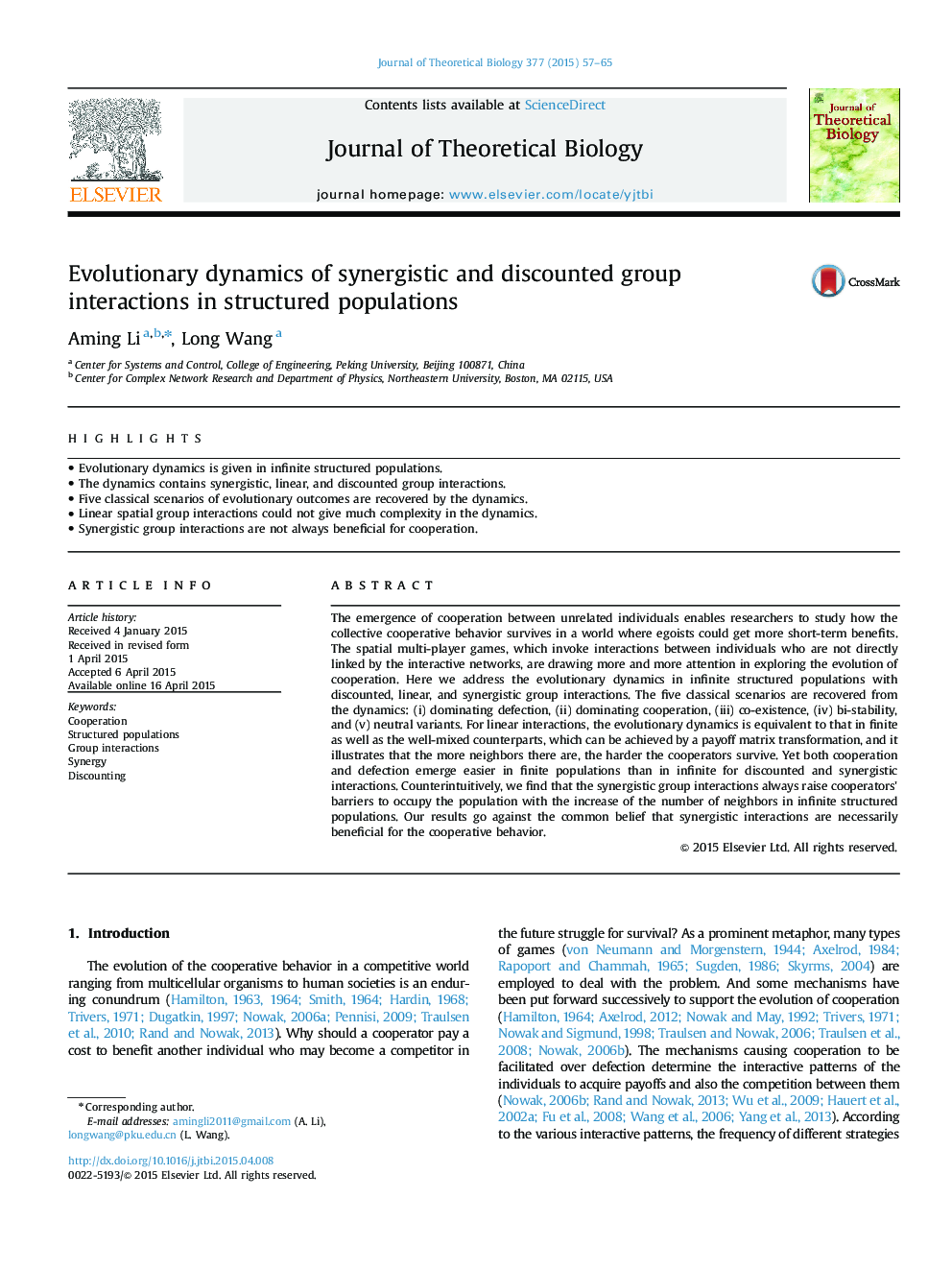| Article ID | Journal | Published Year | Pages | File Type |
|---|---|---|---|---|
| 4496053 | Journal of Theoretical Biology | 2015 | 9 Pages |
•Evolutionary dynamics is given in infinite structured populations.•The dynamics contains synergistic, linear, and discounted group interactions.•Five classical scenarios of evolutionary outcomes are recovered by the dynamics.•Linear spatial group interactions could not give much complexity in the dynamics.•Synergistic group interactions are not always beneficial for cooperation.
The emergence of cooperation between unrelated individuals enables researchers to study how the collective cooperative behavior survives in a world where egoists could get more short-term benefits. The spatial multi-player games, which invoke interactions between individuals who are not directly linked by the interactive networks, are drawing more and more attention in exploring the evolution of cooperation. Here we address the evolutionary dynamics in infinite structured populations with discounted, linear, and synergistic group interactions. The five classical scenarios are recovered from the dynamics: (i) dominating defection, (ii) dominating cooperation, (iii) co-existence, (iv) bi-stability, and (v) neutral variants. For linear interactions, the evolutionary dynamics is equivalent to that in finite as well as the well-mixed counterparts, which can be achieved by a payoff matrix transformation, and it illustrates that the more neighbors there are, the harder the cooperators survive. Yet both cooperation and defection emerge easier in finite populations than in infinite for discounted and synergistic interactions. Counterintuitively, we find that the synergistic group interactions always raise cooperators׳ barriers to occupy the population with the increase of the number of neighbors in infinite structured populations. Our results go against the common belief that synergistic interactions are necessarily beneficial for the cooperative behavior.
